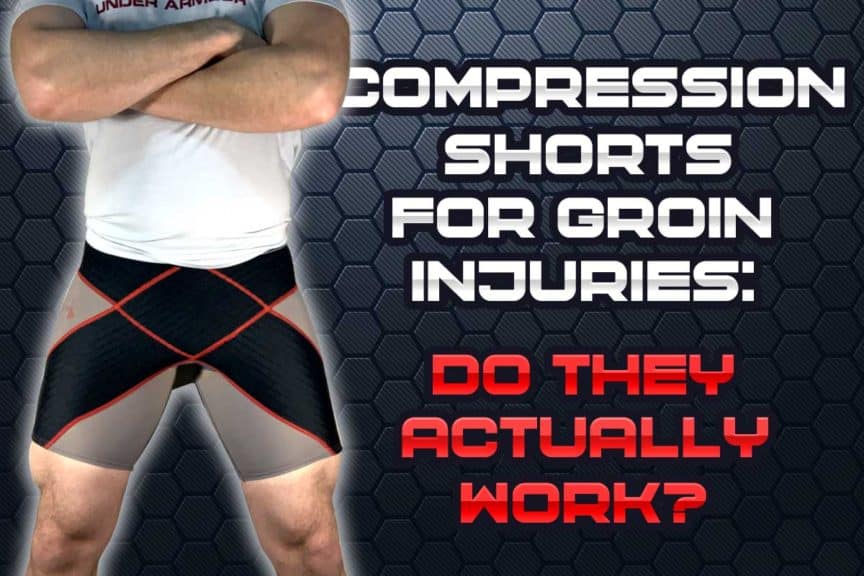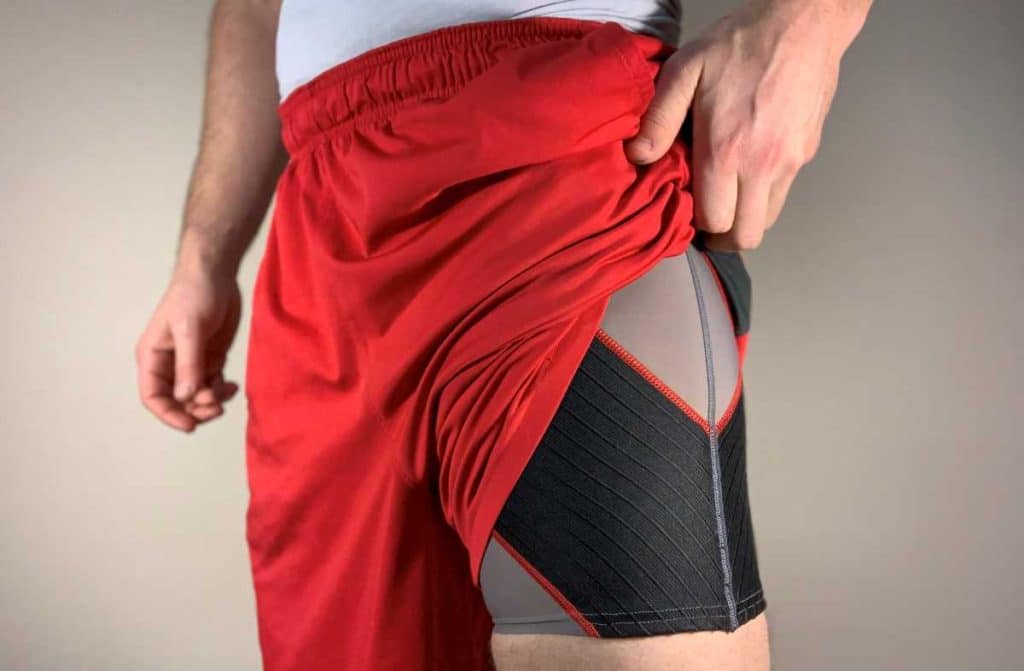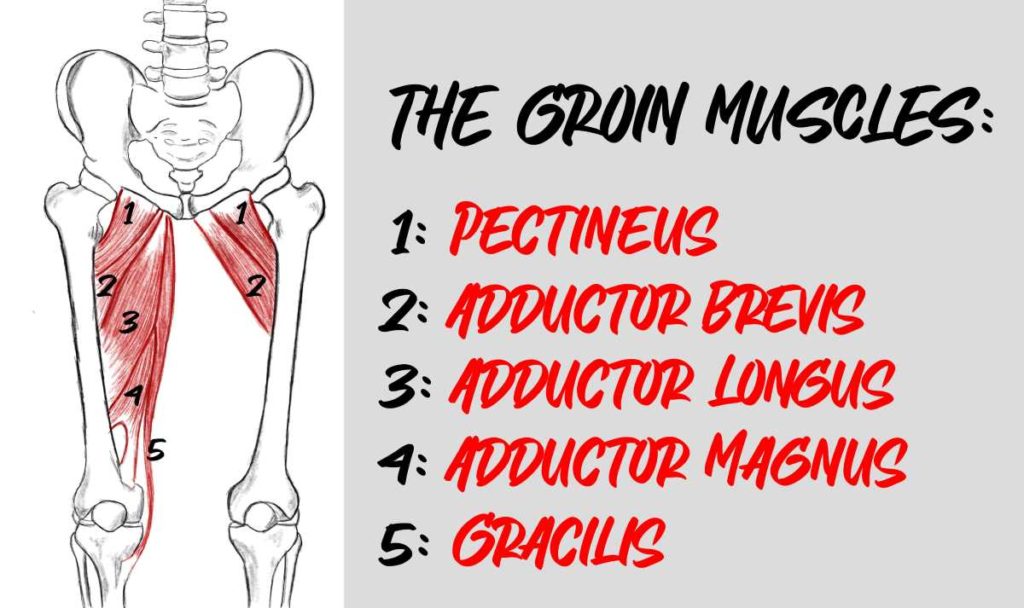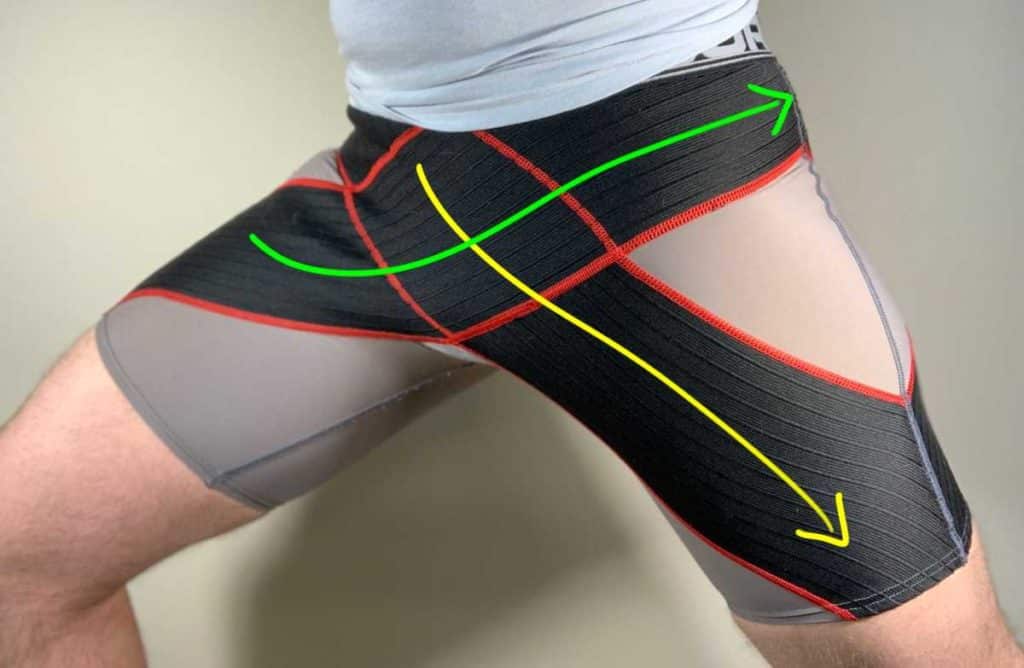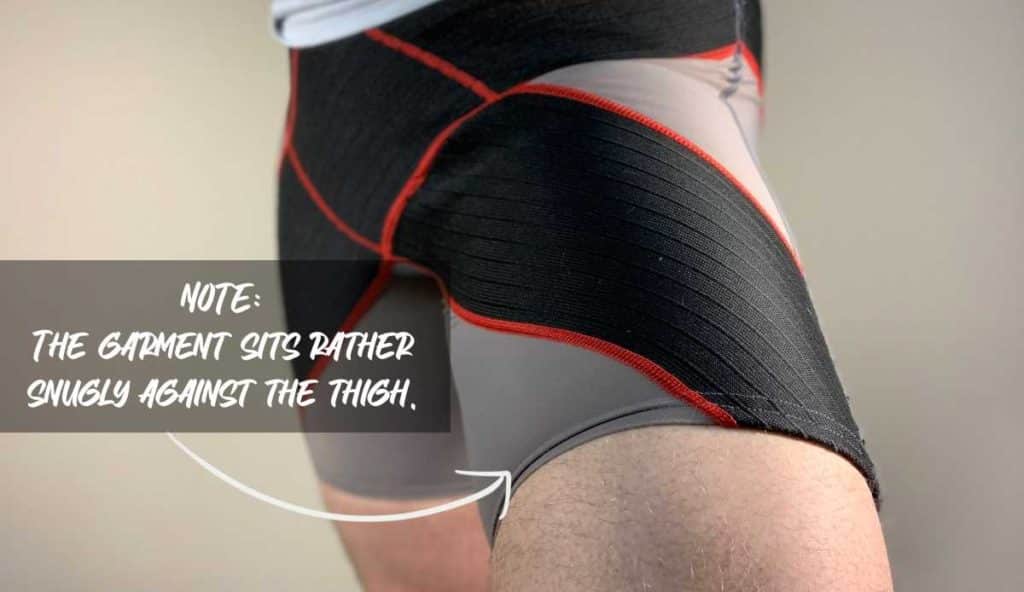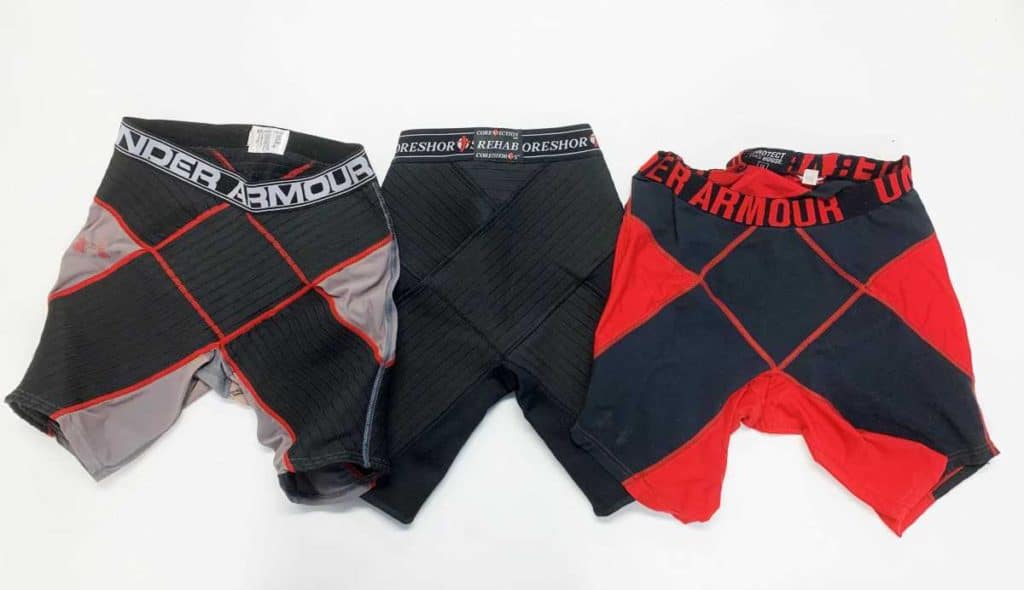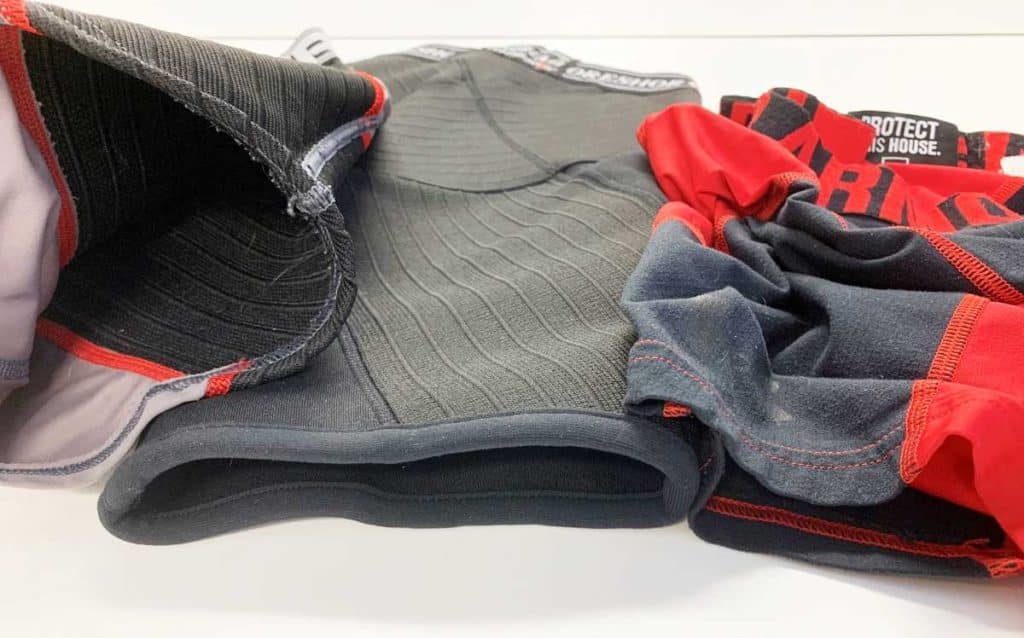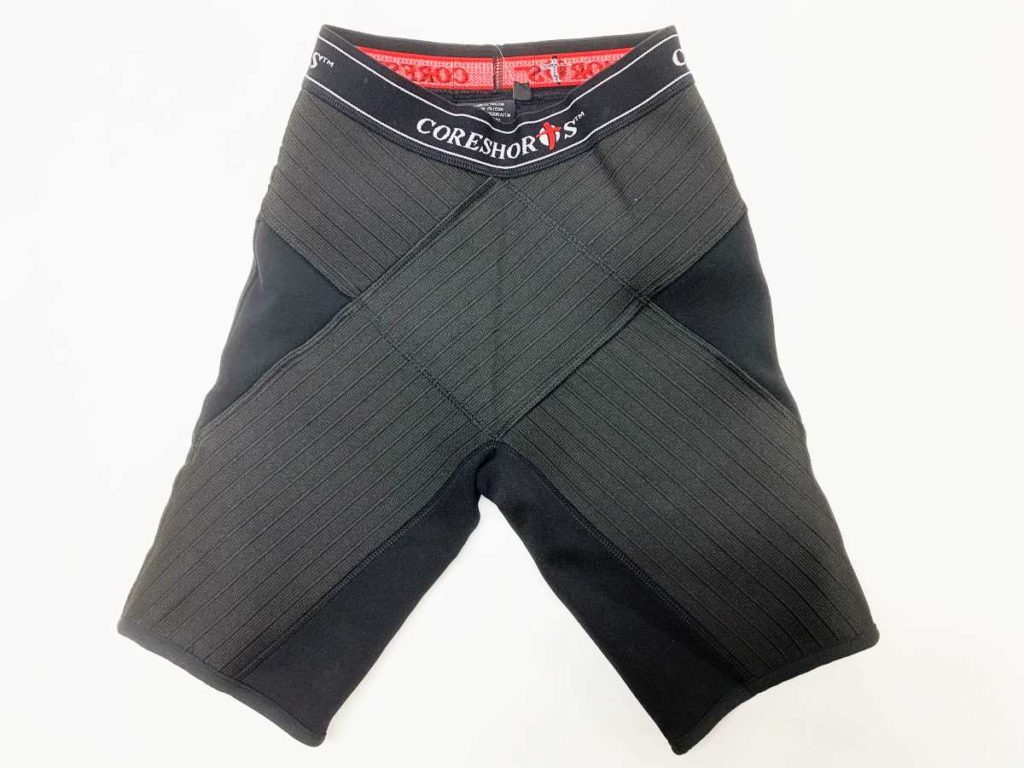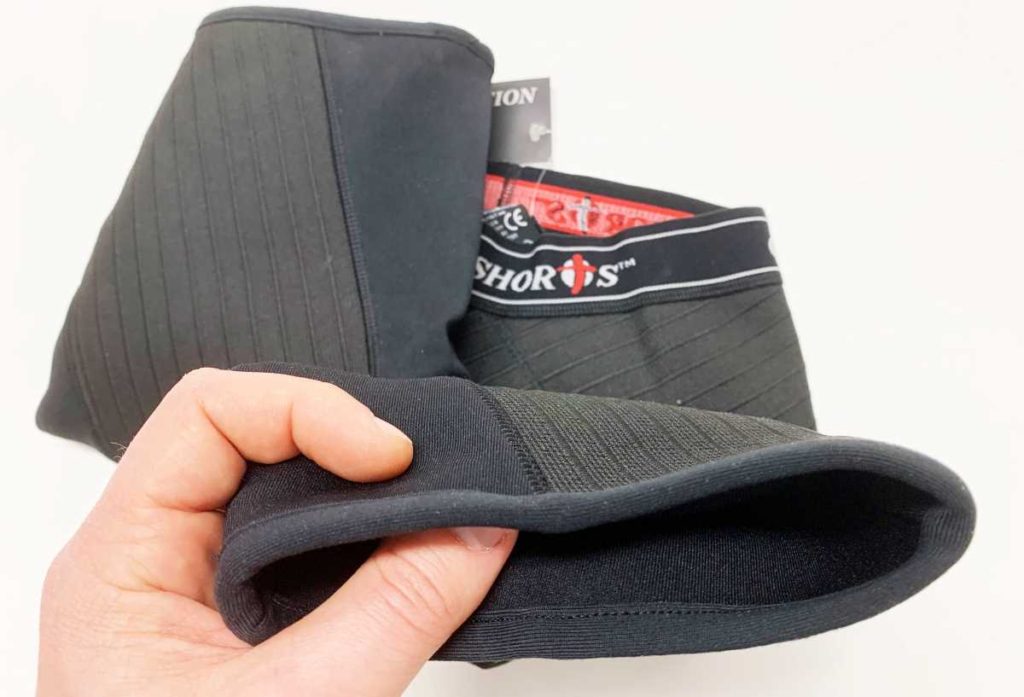A pulled groin is a feeling you won’t soon forget, and the problem is that when it comes to groin pulls (and other groin injuries) you can be reminded of that feeling with nearly every step that you take. This leads many people to seek effective ways to decrease this pain and speed up the recovery process.
Compression shorts can be a rather helpful adjunct to use in the rehab of a groin pull. When both properly sized and worn, they can help to safeguard the strained muscle(s) a bit more while also having a pain-relieving therapeutic effect. These effects are achieved through the compression and sensation that they provide over the injured area.
If you’re wondering if a pair of compression shorts could be money well spent for helping you deal with a groin injury, this article has you covered. In it, I will be covering the basics of groin injuries, how compression shorts work, the science behind their effectiveness and more. So, if you want to learn more of the in-depth information pertaining to how compression shorts can help with groin injuries, keep on reading!
Article overview (Quick links)
Click/tap on any of the sections listed below to be instantly taken to that section of the article
- Understanding groin injuries
- What are compression shorts
- How do compression shorts work?
- What’s the evidence behind compression shorts?
- How to pick the right compression shorts
- Bonus – How to treat a groin injury
- Concluding remarks
Related article: How to prevent a Groin Pull (Complete Step By Step Guide With Photos)
Disclaimer: While I am a physical therapist, I am not YOUR physical therapist. As a result, I cannot tell you whether or not any treatments and/or actions mentioned on this website may or may not be appropriate for you, including all aspects pertaining to groin injuries. By following any information within this post, you are doing so at your own risk. You are advised to seek appropriate medical advice for any pain you may be experiencing.
Understanding groin injuries
The groin refers to a group of muscles (the pectineus, adductor brevis, adductor longus, adductor magus and the gracilis) that are located on the inside portion of the thigh. They are often referred to as the adductor muscles of the hip. The muscles of this area attach from the bottom of the hip bone to the inside of the thigh bone. When these muscles contract they primarily pull the leg towards the midline of the body.
These muscles can be overstretched and subsequently injured when our leg moves too far away from the midline of our body (think of doing the splits with the legs going out to the sides). They can also get injured through other various activities such as skating or even sprinting. While these types of groin injuries tend to be more common in athletic populations due to the frequent and heightened demand placed upon these muscles (a condition known as athletic pubalgia), they can still occur in non-athletic populations as well.
When a muscle is suddenly stretched beyond the range it can tolerate, it is known as a muscle strain. Muscle strains can range in severity of their pain and the severity of a strain is graded on three levels, with agrade I strain being the least severe of muscle trauma and grade III being the most severe.
What are compression shorts
Compression shorts are a snug-fitting (but comfortable) undergarment often worn during physical activities, such as during sports or with daily activities. They can be worn by individuals for different reasons. Some individuals wear them as a means to help improve their athletic performance. Others wear them as either an assistive garment that helps to protect their hip and/or muscles from sustaining an injury or with assisting their muscles and/or other hip structures after experiencing a hip or groin injury.
Related article: Recovering from a Groin Injury: Here’s How to Come Back Stronger
How do compression shorts work?
When dealing with groin injuries, compression shorts seem to have a few different ways in which they can benefit those who wear them. Their main therapeutic effects pertaining to how they can assist with recovering from groin injuries are covered below.
Directional support
The main mechanism of action with compression shorts occurs through the use of directional support; these shorts have elastic material running in specific directions that are woven directly into the fabric. This direction-specific support acts as a set of slings for the groin muscles that are sitting directly beneath the material and essentially running in the same direction as the elastic bands/fabric.
As the athlete or individual moves, the elastic “slings” will provide gentle restriction towards outer ranges of movements that may otherwise stretch or irritate the groin muscles (such as moving the leg away from the midline of the body or pushing the leg backwards at a diagonal direction during a skating stride).
As the elastic material stretches out and provides resistance towards the outer ranges of these movements, the material will then want to “spring” or recoil back, providing working assistance to the groin muscles that are responsible for producing these movements. This means that the strained/irritated groin muscles don’t have to work quite as hard, giving them some reprieve as they continue to heal.
Improved proprioception for awareness of movement
Compression provided over our skin, around muscles and joints improves our brain’s ability to better feel and interpret movement occurring to those regions experiencing the compression. The ability for our brain to feel and understand the positions and movements that our muscles and joints are in is known as proprioception.
Improved proprioception over areas experiencing compression (such as the groin muscles, in this case) can provide a heightened sense of positional awareness and movement awareness for our brain. This means that it’s easier for our brain to know when an injured area (i.e. groin muscle) is either in or is approaching a position that may soon produce discomfort. The brain now also has a heightened sense of awareness as to the sensitivity of the muscle(s) that are irritated or injured.
The result of this increased proprioception over the groin muscle(s) allows us to essentially be better “in tune” with how the injured or sore area is doing overall. By having this heightened awareness, we are more likely to avoid positions that cause the discomfort as well as feel the discomfort earlier on in any bothersome movements.
By detecting the onset of discomfort earlier within a movement, we can modify or cease the movement altogether, avoiding further irritation or injury to the muscle(s). This ultimately allows for quicker injury recovery.
What’s the evidence behind compression shorts?
There’s some decent evidence out there to suggest that compression shorts can be helpful in the management of groin injuries, especially for athletic-based populations. These are the populations who are at greater risk of groin injuries due to the constant demand they place upon the groin muscles.
Some of the research that shows the potential therapeutic benefit of compression shorts in the management of groin injuries include (click on any of the following links to be taken to the article):
- The Use of a Dynamic Elastomeric Fabric Orthosis in Supporting the Management of Athletic Pelvic and Groin Injury
- The effect of compression shorts on pain and performance in male football players with groin pain – A double blinded randomized controlled trial
- Hip adductor activations during run-to-cut maneuvers in compression shorts: Implications for return to sport after groin injury
The nice thing about trying compression shorts is that there’s not much lost, other than a few dollars, if they don’t offer much help in getting over your groin injury. Indeed, when beginning the rehabilitative process to an injured body part, such as a strained groin muscle, conservative measures such as compression shorts are an ideal starting point before resorting to more involved & invasive treatment interventions such as injections or prescription medications.
How to pick the right compression shorts
When it comes to picking out the right compression shorts for you and getting the maximal amount of benefit from them, there are a few things to keep in mind. The main two factors to consider when picking out compression shorts that can help you with your groin injury are appropriate directional support from the garment and ensuring that you pick shorts that are the appropriate size for you. Let’s look at each of these factors in a bit more detail.
Related article: Blood Flow Restriction: Evidence and Uses for Injury Rehabilitation
Ensuring appropriate directional support
Directional support is a key feature when wearing compression shorts for a groin injury. Not all compression shorts are created for helping with groin injuries (some are designed just for improving proprioception or helping with venous blood flow). The compression shorts that are created with groin injuries in mind will provide elastic support to help offload the demands of the adductor muscles while gently restricting them during active movement (see the previous section for more information on this).
When picking out a pair of compression shorts for your groin injury, look for compression shorts that have elastic fabric or elastic bands woven into the shorts themselves. The bands will likely be woven in a diagonal direction, often with the bands intersecting one another, which ensures directional support is being applied to multiple planes of movement, which can more effectively help to offload and support the adductor/groin muscles.
Ensuring proper compression around your thighs
When it comes to picking out the ideal pair of compression shorts, you want to strike the balance between ideal compression without sacrificing comfort. Ideal compression should consist of firm enough pressure around your groin and thighs that you feel some gentle/mind restriction in movement but could easily wear for at least a few hours on end. Too tight and you won’t be comfortable. Too loose and you won’t get any major benefits from the shorts.
Sizing is always a bit tricky when picking out clothing in general, and it may be even a bit trickier when you’re trying to select a garment that needs to be a bit more snug than clothing you normally wear. Let your guiding principle be based around mild-to-moderate compression around your thighs while ensuring that they’re comfortable enough to wear for at least a handful of hours at a time.
Bonus: How to treat a groin injury
When it comes to treating a groin injury (or any other muscle injury/strain), there are some general guidelines to follow.
The guidelines below are for informational purposes only and apply to a grade I strain; grade II and/or III strains may require different approaches. Always consult with a medical professional for your injuries.
Muscles have a very good blood supply, so as long as the strain occurred to the muscle fibers and not the tendon, you’re looking at around 80% recovery within 6-8 weeks as a general guideline. Of course, this can widely vary based on the nature of your injury along with other unique factors pertaining to your overall condition.
Related article: IASTM: Here’s How it Works to Decrease Pain and Improve Mobility
The first 72 hours
Once the grade I strain has occurred, you will generally want to limit movement over the next 24-48 hours while also avoiding any activities and positions that reproduce the pain or discomfort. Tissues just need to chill out here for a bit and do their own thing.
You can opt for using the R.I.C.E. Protocol (rest, ice, compression & elevation) for the first couple of days, however, this protocol is starting to fall out of favor for these types of injuries based on what we continue to learn in science. If you do plan on using this protocol, I would advocate doing so only for the first 48-72 hours max. After that, complete rest and icing have served their purposes.
After the first 72 hours
After taking it rather easy for the first two days, you generally want to start incorporating as much pain-free movement for the muscle as often as possible. Just gentle, gentle stuff here – nothing crazy.
Do movements throughout as much range of motion as you can while avoiding any sort of reproduction of the pain along the way. The goal here is to encourage tissue healing through maintaining good fluid dynamics in and around the tissues while avoiding complications of excessive weakness and stiffness that can develop within or around the muscle due to a lack of activity. Many people incorporate heating modalities to the tissues at this point (also known as thermotherapy). Carry forward with these general movement principles throughout the entire rehab process.
Simply not moving or stimulating a muscle as it recovers will only serve to hinder your recovery rather than augment it; the muscle will lose suppleness/flexibility, will weaken to a much greater extent and will likely have less organized scar tissue over the previously injured area as well.
When to start strengthening the muscle
Generally speaking, you can start strengthening the muscle when you can actively move the muscle through its entire range of motion on your own without any pain or discomfort. Trying to do traditional strengthening exercises before this point may not be ideal as the tissues may not be healthy enough to tolerate these demands.
When it comes to strengthening exercises and how much to do, these are general principles that can be good to follow once you’ve got full, pain-free range of motion back from your grade I muscle strain:
- Perform exercises with enough resistance that you get fatigued around 10-15 repetitions.
- The amount of resistance that you’re using shouldn’t re-create any of the pain that you have felt when dealing with the muscle strain itself.
- Perform 1-2 exercises and perform 2-3 sets for each exercise.
- Take around 60 seconds rest break between each set
- Perform your strengthening routine two or three times per week, but avoid doin so on consecutive days.
Concluding remarks
Groin pulls are a form of muscle strain that can occur to specific muscles on the inside area of the thigh. They are most commonly seen in sports, particularly in ones that require fast, multi-directional movement such as soccer, football and hockey, however, they can also occur in non-sporting-based environments as well.
Compression shorts can be a useful adjunct in the overall treatment of groin injuries; they shouldn’t be used in exclusivity for treating your groin issue, but when combined with other therapeutic interventions and approaches, they can be a worthy investment to make.
There is a surprising amount of evidence showing compression shorts to have therapeutic benefit in certain populations. They’re a good initial step to take when attempting to recover from a groin injury through conservative measures. While they more than likely won’t entirely eliminate your groin pain when donning them, there is indeed some evidence to suggest that they can help with pain reduction and improved muscle awareness (proprioception) when worn.
If you’re thinking about picking up a pair for yourself, you’ll want to make sure that you get shorts that offer good directional support and that fit snugly around your thighs. Wearing them for activities that may be more challenging or demanding for your groin is the ideal time to wear them, however, you may opt to wear them during daily activities as well.

Hi! I’m Jim Wittstrom, PT, DPT, CSCS, Pn1.
I am a physical therapist who is passionate about all things pertaining to strength & conditioning, human movement, injury prevention and rehabilitation. I created StrengthResurgence.com in order to help others become stronger and healthier. I also love helping aspiring students and therapists fulfill their dreams of becoming successful in school and within their clinical PT practice. Thanks for checking out my site!

